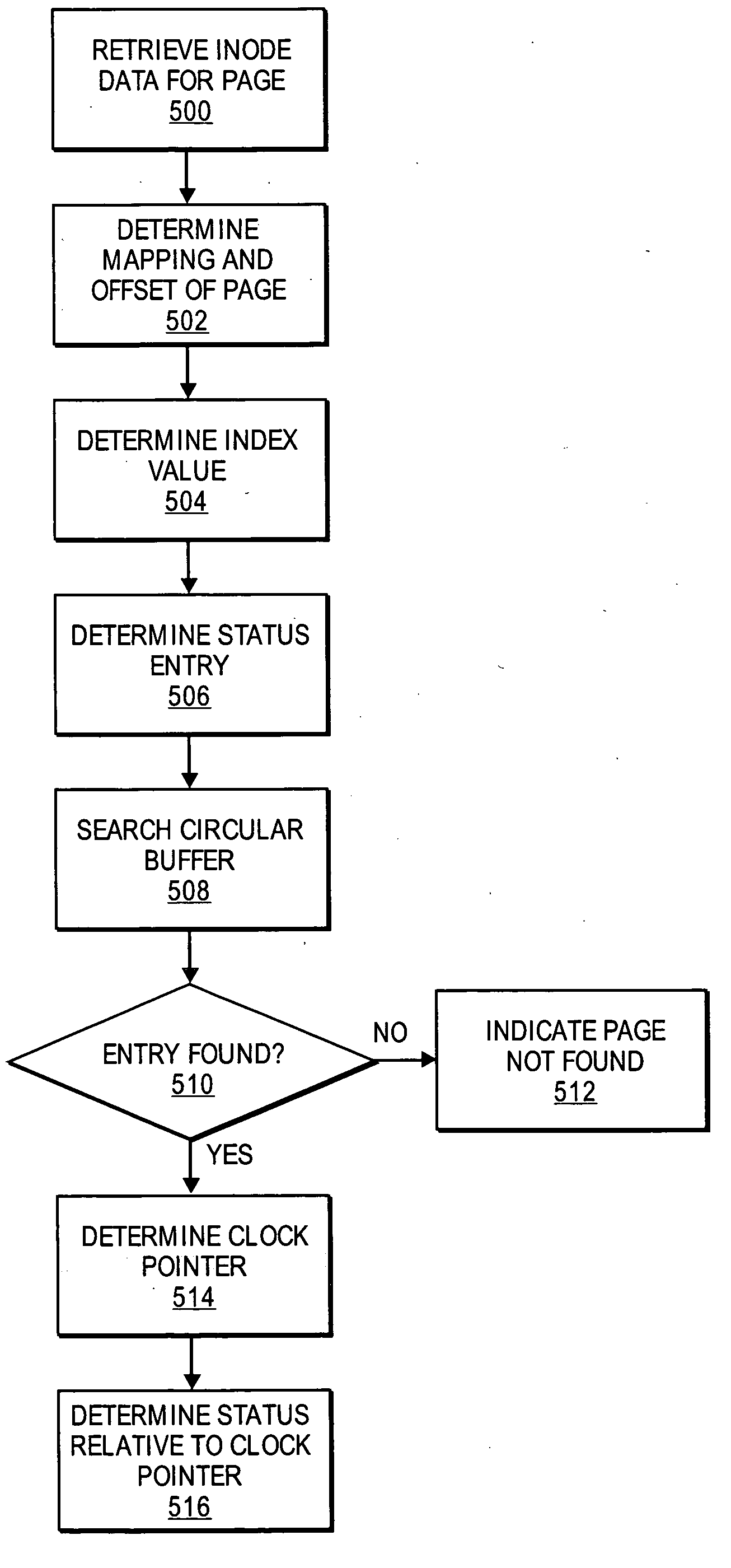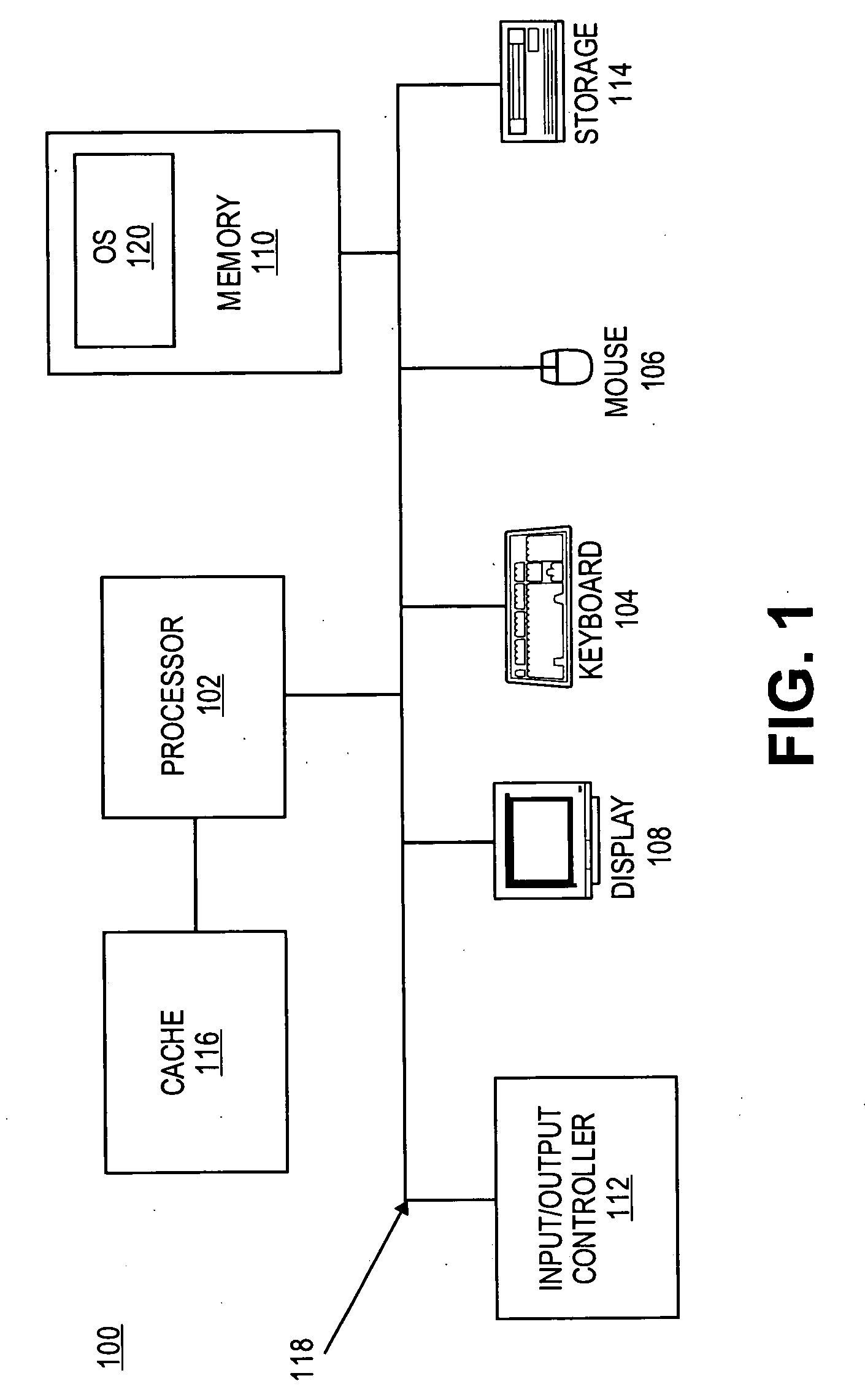Method for tuning a cache
- Summary
- Abstract
- Description
- Claims
- Application Information
AI Technical Summary
Benefits of technology
Problems solved by technology
Method used
Image
Examples
Embodiment Construction
[0021] Embodiments of the present invention provide methods and systems for tuning the size of the cache. In particular, when a page fault occurs, non-resident page data is checked to determine if that page was previously accessed. If the page is found in the non-resident page data, an inter-reference (or reuse) distance for the faulted page is determined and the distance of the oldest resident page is determined. The size of the cache may then be tuned based on comparing the inter-reference distance of the newly faulted page relative to the distance of the oldest resident page.
[0022]FIG. 1 illustrates a computer system 100 that is consistent with embodiments of the present invention. In general, embodiments of the present invention may be implemented in various computer systems, such as a personal computer, server, workstation, and the like. However, for purposes of explanation, system 100 is shown as a general purpose computer that is well known to those skilled in the art. Examp...
PUM
 Login to View More
Login to View More Abstract
Description
Claims
Application Information
 Login to View More
Login to View More - R&D
- Intellectual Property
- Life Sciences
- Materials
- Tech Scout
- Unparalleled Data Quality
- Higher Quality Content
- 60% Fewer Hallucinations
Browse by: Latest US Patents, China's latest patents, Technical Efficacy Thesaurus, Application Domain, Technology Topic, Popular Technical Reports.
© 2025 PatSnap. All rights reserved.Legal|Privacy policy|Modern Slavery Act Transparency Statement|Sitemap|About US| Contact US: help@patsnap.com



